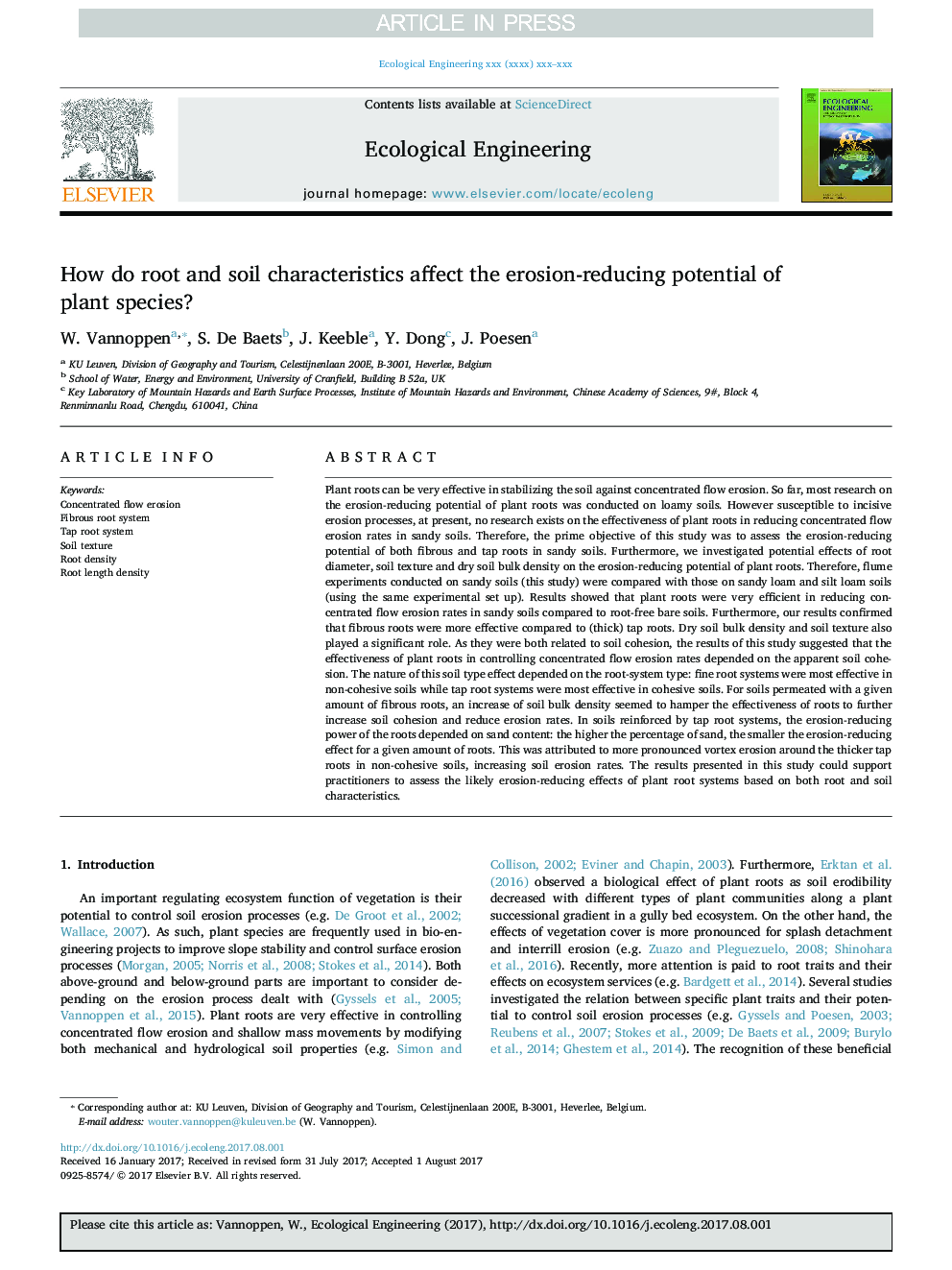| Article ID | Journal | Published Year | Pages | File Type |
|---|---|---|---|---|
| 8848158 | Ecological Engineering | 2017 | 10 Pages |
Abstract
Plant roots can be very effective in stabilizing the soil against concentrated flow erosion. So far, most research on the erosion-reducing potential of plant roots was conducted on loamy soils. However susceptible to incisive erosion processes, at present, no research exists on the effectiveness of plant roots in reducing concentrated flow erosion rates in sandy soils. Therefore, the prime objective of this study was to assess the erosion-reducing potential of both fibrous and tap roots in sandy soils. Furthermore, we investigated potential effects of root diameter, soil texture and dry soil bulk density on the erosion-reducing potential of plant roots. Therefore, flume experiments conducted on sandy soils (this study) were compared with those on sandy loam and silt loam soils (using the same experimental set up). Results showed that plant roots were very efficient in reducing concentrated flow erosion rates in sandy soils compared to root-free bare soils. Furthermore, our results confirmed that fibrous roots were more effective compared to (thick) tap roots. Dry soil bulk density and soil texture also played a significant role. As they were both related to soil cohesion, the results of this study suggested that the effectiveness of plant roots in controlling concentrated flow erosion rates depended on the apparent soil cohesion. The nature of this soil type effect depended on the root-system type: fine root systems were most effective in non-cohesive soils while tap root systems were most effective in cohesive soils. For soils permeated with a given amount of fibrous roots, an increase of soil bulk density seemed to hamper the effectiveness of roots to further increase soil cohesion and reduce erosion rates. In soils reinforced by tap root systems, the erosion-reducing power of the roots depended on sand content: the higher the percentage of sand, the smaller the erosion-reducing effect for a given amount of roots. This was attributed to more pronounced vortex erosion around the thicker tap roots in non-cohesive soils, increasing soil erosion rates. The results presented in this study could support practitioners to assess the likely erosion-reducing effects of plant root systems based on both root and soil characteristics.
Related Topics
Life Sciences
Agricultural and Biological Sciences
Ecology, Evolution, Behavior and Systematics
Authors
W. Vannoppen, S. De Baets, J. Keeble, Y. Dong, J. Poesen,
